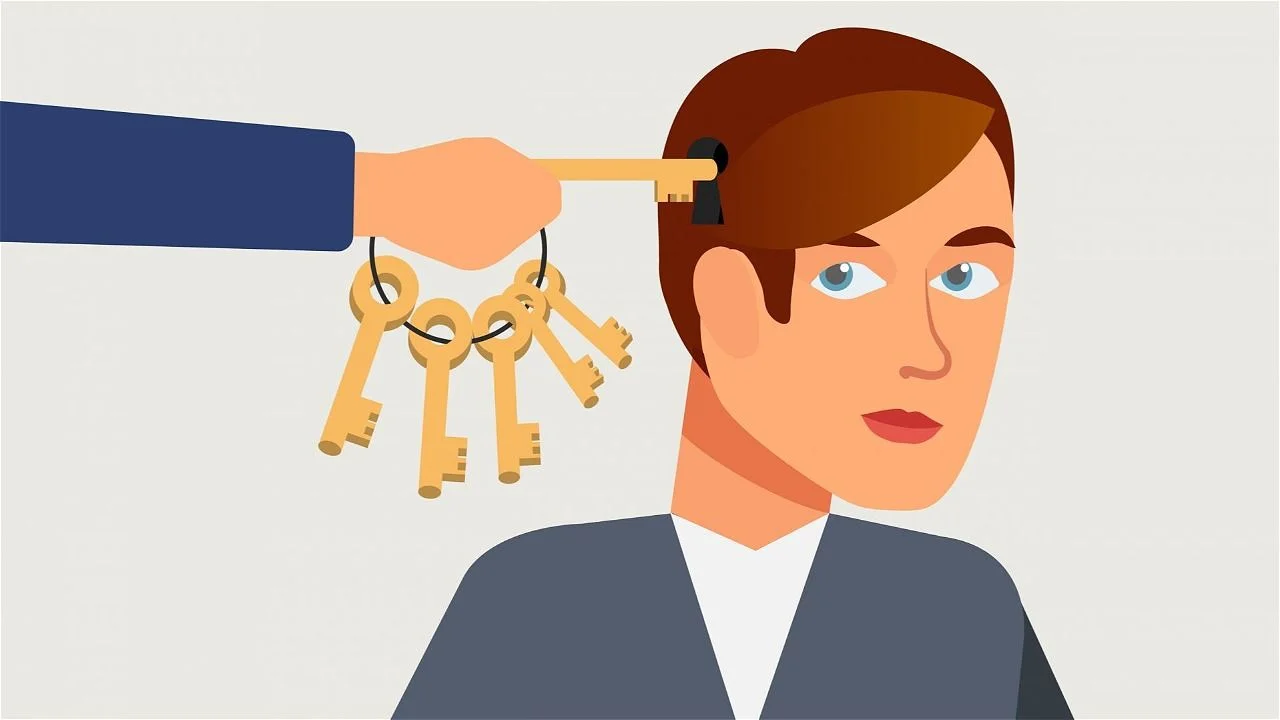
"Our greatest glory is not in never falling, but in rising every time we fall."
Confucius (551 BC – 479 BC) was a Chinese teacher, politician, and philosopher. By Simran Khurana (Updated March 18, 2017)
Medicine makes negligible use of hypnosis as a therapeutic tool for diseases of the body, mainly due to a lack of understanding of the deep connection between body and mind, which is expressed primarily in unresolved traumas that reside in the subconscious. Since access to the subconscious mind is (deliberately) blocked, only a few techniques can penetrate it. For Westerners, almost the only option is hypnosis.
Hypnotherapy introduction.
Hypnosis is a powerful and unique tool for penetrating the subconscious.
- Quite a few people have an inherent fear of hypnosis because of the loss of control involved in the action. However, without the cooperation of the patient, hypnosis is impossible.
- Hypnotherapy can locate and eliminate unresolved traumas that can be removed and returned to the conscious, where they do not harm, even if they are harrowing memories. This action critically impacts many illnesses, such as autoimmune diseases, cancer (especially young), addictions, mental disorders, stuttering, autism, and more. Young patients (age 30 and under) with chronic inflammatory diseases must also consider hypnosis for the same reasons.
- Hypnosis is seen as relevant only for cases where there is a need to treat the psyche. The use of hypnosis as a powerful tool for treating complex chronic diseases, such as cancer and autoimmune diseases, is almost non-existent, mainly due to the lack of awareness of the enormous potential inherent in hypnosis as a therapeutic tool.
Hypnosis is sometimes known to the public for its use for entertainment purposes while demonstrating its inherent abilities. This use caused a misconception about hypnosis.
Therefore, the subconscious is designed to protect us and is not easily accessible.

The subconscious mind is the gate that connects the mind to the body, making it spiritual.
The subconscious mind is a "virtual safe" for unresolved traumatic events from our past. It has an immense impact on our physical and mental health. Therefore, it cannot be easily penetrated.
- Penetration into the subconscious is often not possible through the tools of psychology. Only techniques of hypnosis, meditation, tai chi, Kung fu, and the like (commonly used in martial arts) can penetrate the subconscious mind. Even shamanic rituals and psychedelic drugs such as Ayahuasca can penetrate the subconscious. These drugs are often illegal and banned from use.
The subconscious is part of the self-defense mechanism required for survival.
- The subconscious mind activates many processes, bypassing logic and critical thinking; it is a mechanism designed for life-force energy conservation, crucial for the survival of any living being.
- The subconscious mind is part of the self-defense mechanism of the mind. One function is to store unresolved traumatic events that may prevent us from functioning correctly.
- People often have a natural fear of penetrating techniques into the subconscious mind. But they are critical to healing from chronic diseases and addictions.
Why do traumatic memories sometimes erupt from the subconscious mind through illnesses or addictions?
- The subconscious mind is a digital safe. If traumas are too complex to store or the subconscious mind's peripheral protection is loosened, things break out and harm the body through its energy meridian network. (Not the nervous system)
From what age can unresolved mental traumas be accumulated in the subconscious mind?
- Awareness and memories usually begin only from the age of two onwards. In contrast, the subconscious mind is active almost immediately after birth. There are even claims that it is active during fetal development. My granddaughter suffered from trauma in kindergarten at the age of only one year and three months, which caused her to have uncontrollable hair pulling (trichotillomania). The problem was only repaired after a long time after she left for a remote kindergarten! It also means that the subconscious mind is already active at the age of one year.
Psychotherapy has a limited effect on physical & mental health.

Psychotherapy usually cannot penetrate the subconscious.
Link: Psychotherapy (Wikipedia)
Psychology is essential on many levels but not in penetration into the subconscious. Access to the subconscious is blocked! Routine psychology techniques, often unable to penetrate the subconscious mind, constitute a digital safe.
Why do people tend to go to psychotherapy? (partial list)
- Many people need the attentive ear of a neutral person, an experienced expert.
- Resolving personal or family conflicts.
- Couples counseling.
- Personal crises of all kinds.
- People in the modern age are more lonely than ever! The psychologist is an attentive, empathetic, supportive, and understanding figure.
Are psychological treatments unnecessary in cases of attempts to reconstruct unresolved traumas?
- Psychological treatment may provide vital support, but it is often unable to get to the root of the problem and eliminate it, regardless of the number of treatments. The subconscious is a closed virtual safe.
Hypnosis is the most valuable and available technique for penetrating the subconscious mind.
Link: Hypnotherapy (Wikipedia)
Many people have a deep-seated fear of hypnosis treatments, partly because of the negative image created of hypnosis from the use of entertainment performances. Hypnosis (and similar techniques) has the possibility (almost exclusively) of penetrating the subconscious and releasing unresolved traumas. Addicts, autoimmune disease patients, stuttering, mental disorders, and cancer patients (especially young) are also advised to use hypnotherapy.
- The use of hypnosis may be perceived by many as unrelated to their illness, but the release of unresolved mental traumas has far-reaching effects on the body. Hypnosis can penetrate the conscious mind, eliminate unresolved traumatic events, and improve patient recovery chances. It is especially recommended for chronic patients whose disease onset at a young age (30-35) and below.
Some people are unable to release to the level required for hypnosis. It is essential to choose a qualified hypnotist licensed to practice medical hypnosis. A person you can feel confident and comfortable with.
- Hypnosis has created a negative image because it has sometimes been misused in failed performances for entertainment purposes. It is a technique of immense importance to our mental and physical health.
- The method has enormous advantages, but it requires the hypnotist's cooperation, and the subject cannot be hypnotized by force.
- Removing traumatic memories from the subconscious does not involve forgetting. It is enough to return them to consciousness, where treating them is much easier.
Hypnotherapists sometimes also use blinking techniques to locate when the traumas occurred and find the unresolved ones. (The eyelids are a compassionate place for different frequencies.)
- The treatment required varies from person to person, usually requiring several treatments. I have needed dozens of hypnosis-like treatments over several years.
Hypnosis is a technique used very little in medicine, mainly because medicine has not yet discovered its enormous potential to improve our physical and mental health.
Eliminating unresolved traumatic memories from the subconscious is essential for recovery from many illnesses and medical conditions.
Eliminating unresolved mental traumas consists of two stages:
- Locating the unresolved traumatic event (or events). It is important to emphasize that most people cannot perform self-psychoanalysis, especially regarding childhood events and the distant past. (Sometimes also events related to deceased relatives)
- Releasing the traumatic events (on a mental level) to retrieve them to consciousness, where they are harmless, even if very painful! The release of the traumas does not involve forgetting.
Releasing traumatic events is a challenging process that can sometimes take a long time. It is difficult to recover from chronic diseases and addictions without the release of the traumas. It took me several years.
Hypnosis for Clearing Subconscious Negativity.
There are other subconscious intrusion techniques, but they are also challenging to implement and equally daunting.
- Profound meditation (challenging to achieve) can induce a kind of self-hypnosis. This technique requires a lot of skill and concentration, and only a few can perform it.
- Some people use hallucinogenic drugs such as Ayawaska, which is often illegal and requires expertise.
- Shamanic therapists, perceived in the West as idolaters, use hypnotic techniques that penetrate the conscious mind. Unsurprisingly, they have a positive effect on patients. (Cooperation required)
Techniques can treat the symptoms of energetic blockages without penetrating the subconscious mind.
- Acupuncture does not penetrate the conscious mind but can release energetic blockages caused by unresolved traumatic events.
- Energetic flushing. (The technique is only available in certain places around the world.)
- The placebo effect.
- Illegal drugs (used in shamanic rituals), such as Ayahuasca, and the active ingredient in the ecstasy drug. (MDMA)
Peruvian shaman.

I have many years of experience with hypnosis-like therapy; the treatment saved my life by helping me face all the obstacles on the road to recovery.
Modern medicine underestimates hypnosis as a robust healing medical procedure.

Hypnosis is a powerful tool for penetrating the subconscious. Hypnosis can locate and eliminate unresolved traumas that can be removed and returned to the conscious, where they do not harm, even if they are harrowing memories. This action critically impacts many illnesses, such as autoimmune diseases, cancer (especially young), addictions, mental disorders, stuttering, autism, and more.

